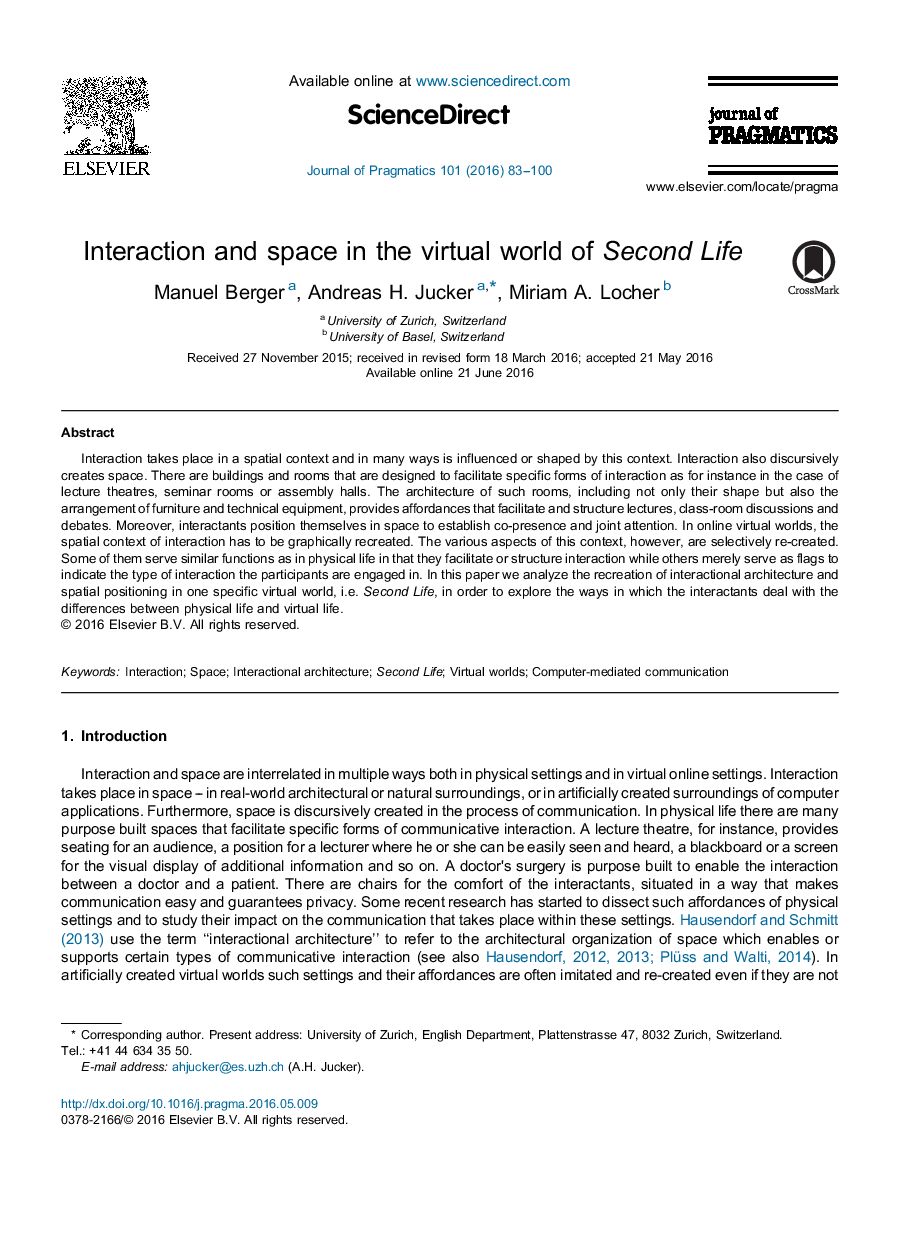| Article ID | Journal | Published Year | Pages | File Type |
|---|---|---|---|---|
| 7297839 | Journal of Pragmatics | 2016 | 18 Pages |
Abstract
Interaction takes place in a spatial context and in many ways is influenced or shaped by this context. Interaction also discursively creates space. There are buildings and rooms that are designed to facilitate specific forms of interaction as for instance in the case of lecture theatres, seminar rooms or assembly halls. The architecture of such rooms, including not only their shape but also the arrangement of furniture and technical equipment, provides affordances that facilitate and structure lectures, class-room discussions and debates. Moreover, interactants position themselves in space to establish co-presence and joint attention. In online virtual worlds, the spatial context of interaction has to be graphically recreated. The various aspects of this context, however, are selectively re-created. Some of them serve similar functions as in physical life in that they facilitate or structure interaction while others merely serve as flags to indicate the type of interaction the participants are engaged in. In this paper we analyze the recreation of interactional architecture and spatial positioning in one specific virtual world, i.e. Second Life, in order to explore the ways in which the interactants deal with the differences between physical life and virtual life.
Related Topics
Social Sciences and Humanities
Arts and Humanities
Language and Linguistics
Authors
Manuel Berger, Andreas H. Jucker, Miriam A. Locher,
